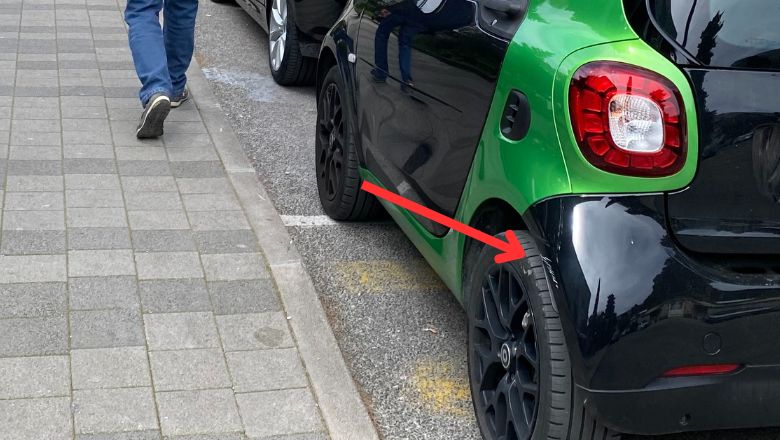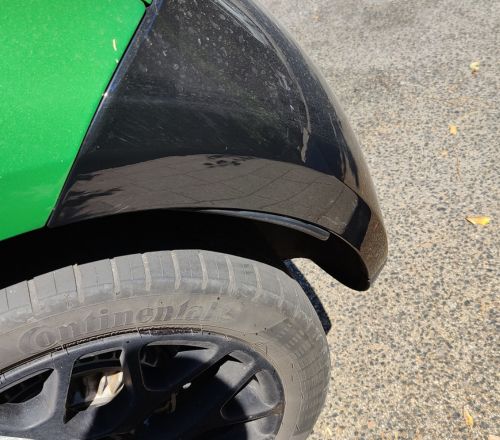How To Remove Paint Scuff From Cars: The Guide
Car Detailing Planet is a part of Amazon Associates. As an Amazon Associate, we earn from qualifying purchases. Read our Affiliate Disclosure to learn more.
There’s nothing worse than seeing paint scuff on your car. I know the feeling when it happens to me, and I’m pretty sure that everyone reacts in a similar way.
But worry not because today I’ll show you some simple DIY tips on how to remove paint scuffs from a car.
Key Takeaways:
- Lacquer thinner is an effective and affordable solution for removing paint scuffs at home. Just remember to use it sparingly and gently.
- Always use a microfiber towel when applying lacquer thinner and wiping off the residue to avoid causing further damage to the paint.
- After removing the scuff, clean the area with soapy water to ensure no lacquer thinner or paint residue remains.
- If the scuff doesn’t come off after three attempts, it might be a deep scratch rather than a superficial scuff, and professional help may be needed.
What Are Paint Scuffs?

Paint scuffs are unsightly marks that appear on a car’s surface when it comes into contact with another object. This could be anything from another vehicle’s paint, a wall, a pole, or even a shopping cart.
The impact causes the other object’s paint to transfer onto the car, resulting in what we commonly refer to as a paint scuff or paint transfer. These scuffs can be a real eyesore, especially on a well-maintained vehicle.
While paint scuffs may seem like a serious issue, they’re usually superficial, affecting only the clear coat of the car’s paint job.
This means they don’t penetrate deep into the paint layers, making them easier to remove than deep scratches. However, if left untreated, paint scuffs can detract from your car’s appearance and potentially impact its resale value.
How To Remove Paint Scuff From Cars: DIY Guide
Over the past decade, I’ve honed a technique that I believe is the quickest and most effective for DIY enthusiasts.
While it’s a method that some might not recommend, in my experience, it has consistently delivered excellent results, and I’m confident that it’s the best way to tackle paint scuffs.
What You’ll Need
To get started with the paint scuff removal process, you’ll need a few simple items:
- Lacquer Thinner: This is the key ingredient in our paint scuff removal process. It’s designed to dissolve the paint transfer, making it easier to wipe off. I personally recommend using Klean-Strip Lacquer Thinner, which you can easily find on Amazon.
- Two Microfiber Cloths: You’ll need one cloth to apply the lacquer thinner and another to wipe off the residue. Microfiber cloths are ideal because they’re soft, highly absorbent, and won’t scratch your car’s paint.
- Soapy Water: Once the paint scuff is removed, you’ll need some soapy water to clean the area and remove any remaining lacquer thinner.
These are the basic supplies you’ll need to remove paint scuffs from your car effectively.
Step 1: Pour Lacquer Thinner on a Microfiber Cloth

The first step in the actual removal process is to apply the lacquer thinner to one of your microfiber towels. It’s crucial to remember that less is more when it comes to using lacquer thinner. You don’t want to drench the cloth, but rather just dampen it.
Pour a small amount of the thinner onto the cloth, just enough to make it slightly wet. Using too much lacquer thinner can potentially harm the clear coat of your car’s paint, which is something we want to avoid. That’s why it’s important to proceed slowly, gently, and with caution.
The goal here isn’t to soak the cloth in lacquer thinner but to have just enough to help dissolve the paint scuff.
Step 2: Gently Rub The Scuffed Area
With your lacquer thinner-dampened microfiber towel in hand, it’s time to rub the scuffed area gently. The lacquer thinner should immediately start to break up the paint scuffs and paint transfers. Remember, you’re not trying to scrub the paint off; instead, you’re allowing the thinner to do its job.
Avoid pressing the microfiber cloth hard onto the paint. A gentle rubbing motion is all that’s needed. The aim is to let the lacquer thinner dissolve the paint scuff, not to scrape it off physically.
If the paint scuffs don’t disappear immediately, don’t worry. You can repeat the process a couple more times, but I recommend a maximum of three passes. Overdoing it could potentially harm the clear coat of your car’s paint.
If the lacquer thinner doesn’t remove the scuff after three passes, it’s likely that you’re dealing with a deep scratch rather than a typical paint scuff or paint transfer.
Step 3: Wipe With a Clean Microfiber Towel
Once you’ve successfully removed the paint scuff, the next step is to take a clean microfiber towel and wipe down the area. This step is crucial as it removes any remaining residue left by the lacquer thinner.
Lacquer thinner is a strong solvent, and if left sitting on the car’s paint, it could potentially cause damage. By wiping the area clean, you’re ensuring that no lacquer thinner remains on the surface.
Step 4: Clean The Surface With Soapy Water
The final step in this DIY guide is to thoroughly clean the surface with some soapy water. This step ensures that there’s absolutely no residue from the lacquer thinner or paint scuff left on your car’s paint.
Simply spray some soapy water onto the treated area. Then, take your clean microfiber towel (you can use the one from the previous step, just flip it to the unused side) and gently wipe the surface clean.
Here are two images of a Smart by my father-in-law. Unfortunately, both of the images aren’t the best because I forgot to take proper images before and after, but hopefully, you’ll be able to see the paint scuff on the first, and on the second image, it disappeared – it’s now almost 90% fixed.


As you can see, there’s still a tiny scratch but that will require some polishing. Anyway, the results are 10x better than before.
Other Ways For Removing Paint Transfer From Cars
While the method I’ve shared is my go-to for removing paint scuffs, there are other methods you can use, including a scratch remover, a Magic Eraser, or a nail polish remover.
1. Scratch Removers
Scratch removers, such as polishing compounds, are often seen as the most “proper” way to remove paint scuffs. However, I didn’t recommend them initially because not everyone has these products at home, and they tend to be more expensive compared to lacquer thinner.
To use a scratch remover, simply pour some of the compound onto a microfiber towel and work it into the scuffed area until the paint transfer is gone. Then, wipe off the area with a clean microfiber cloth.
2. Magic Eraser
Magic Eraser can also be effective at removing paint scuffs. However, I generally don’t recommend this method because, while they can remove the paint transfer, they can also cause swirl marks and light scratches on the car’s paint, creating new defects.
3. Nail Polish Remover
Nail polish remover is another alternative that works similarly to lacquer thinner and can be quite effective. If you don’t have lacquer thinner at home, you might consider borrowing some nail polish remover. The process for using it is the same as with lacquer thinner.
Each of these methods has its pros and cons, and what works best will depend on your specific situation and the resources you have at hand.
What To Do After Removing Paint Scuff From Car
Once you’ve successfully removed the paint scuff from your car, it’s a good idea to take a moment to inspect the paint. Look closely at the area where the scuff was to see if there are any remaining marks or if the paint appears scratched.
If you notice any additional imperfections, you might want to consider using a polishing compound or cleaner wax. These products can help restore the shine of your car’s paint, giving it a flawless finish.
This step isn’t mandatory. It’s more of a finishing touch for those who want their car to look its absolute best.
After all, a car is more than just a mode of transport – for many of us, it’s a source of pride and joy. So, why not give it the best treatment possible?
Can You Prevent Paint Scuffs?

While it’s impossible to completely prevent paint scuffs, there are measures you can take to reduce the likelihood of them occurring.
One of the most effective ways is to apply some form of paint protection to your car. However, it’s important to note that only paint protection films will provide substantial protection against paint transfer and scuffs. Other options like waxes, sealants, and ceramic coatings offer minimal, if any, protection against these issues.
Another key factor is careful driving and parking. Many paint scuffs occur as a result of minor collisions or scrapes, often in parking lots. By driving carefully and ensuring there’s enough space between your car and others when parking, you can significantly reduce the risk of paint scuffs.
While these measures can help, they’re not foolproof. Paint scuffs can happen even when you take all the precautions. The good news is, as we’ve seen, they’re usually quite easy to remove.
FAQs
Yes, you can remove paint scuffs at home using a few simple items like lacquer thinner and microfiber towels.
After removing paint scuffs, inspect the area for any remaining marks or scratches and consider using a polishing compound or cleaner wax for a flawless finish.
You should consider professional help if the paint scuff doesn’t come off after three attempts with lacquer thinner, as it may be a deep scratch rather than a superficial scuff.
Paint scuffs can decrease your car’s value as they affect its aesthetic appeal, but they can usually be removed easily, restoring the car’s appearance and value.
